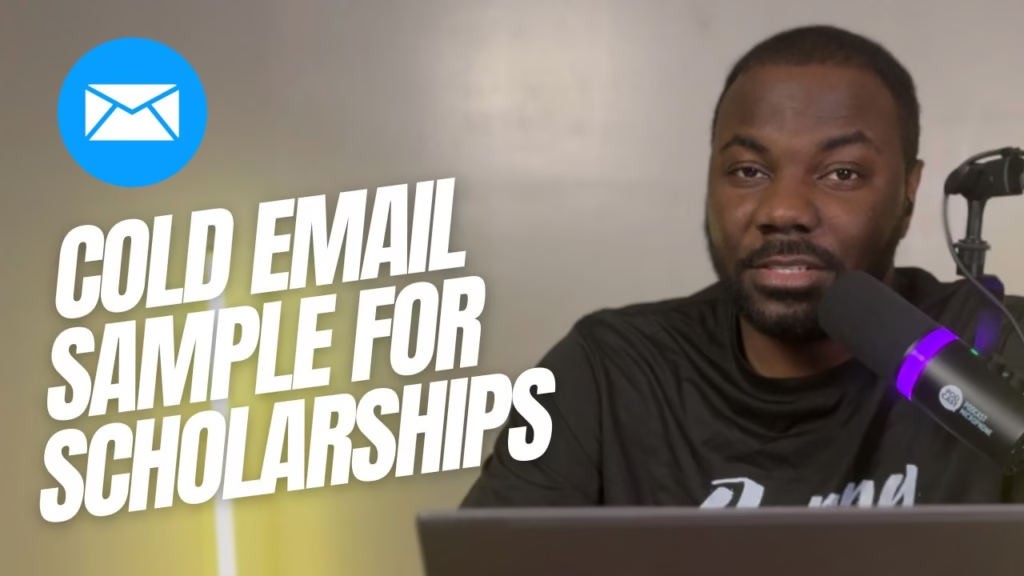Key Elements of a Cold Email Template for Research
Let’s break down the critical sections of this cold email to help you understand how to structure it to your own needs:

1. Subject Line: Make it Specific and Engaging
The subject line is the first thing the recipient will see, so it should be clear and to the point. A subject like “Inquiry About Master’s Program Opportunities” lets the recipient know immediately what your email is about.
If you’re reaching out for a specific research project, consider using a subject like:
- “Inquiry About Research Collaboration in [Research Topic]”
- “Seeking Master’s Program Opportunities in [Specific Field]”
- “Interested in Research Assistantship Opportunity in [Research Area]”
2. Personalized Greeting
Address the recipient by name and use a formal tone. “Dear Professor [Last Name]” is appropriate for academic emails. If you’re unsure of the professor’s title, “Dear Dr. [Last Name]” is a safe alternative.
3. Introduction: Present Your Background and Achievements
In this section, briefly introduce yourself and highlight your qualifications. Mention your degree, class rank, and CGPA if they reflect well on your academic abilities. If you have any relevant awards, achievements, or experiences, be sure to mention them as well.
Example:
“I am a [First Class] graduate of [Your Program] from the University of [Your University], graduating in the top 10% of my class with a CGPA of [Your CGPA].”
4. Show Genuine Interest in the Professor’s Work
Professors are more likely to respond to emails from students who have done their homework. Show that you’ve read their publications or are familiar with their research. Be specific about what caught your attention, such as a paper they published or a research topic they’re known for.
Example:
“I recently came across your work, particularly your publication on ‘[Specific Paper Title]’ in [Year], which I found highly insightful. Your research on [Topic] aligns closely with my interests, and I believe working with you would provide invaluable experience.”
5. Mention Your Research Interests and How They Align with the Professor’s Work
Clearly state your research interests and explain why you’re excited to work under the professor’s supervision. Mention any relevant experiences, such as research projects or internships that have prepared you for this opportunity.
Example:
“During my undergraduate studies, I conducted research on [Undergraduate Project Topic], which solidified my passion for [Research Field]. I am eager to explore [Specific Research Interests], and I would be honored to contribute to your ongoing projects.”
6. Make a Clear Request
Be direct about what you’re asking for. Whether it’s a question about a scholarship, research assistantship, or a Master’s program opportunity, make sure your request is clear and respectful.
Example:
“I would be grateful if you could let me know about potential opportunities for the Master’s program at [University Name] for the [Year] intake.”
7. Conclusion: Show Appreciation and Follow-Up
Finish your email by thanking the professor for their time and consideration. Indicate that you look forward to their response and provide your contact information.
Best Practices for Cold Emailing Professors
- Be concise: Professors are busy, so make sure your email is to the point while still being polite and professional.
- Proofread: Always proofread your email before sending it. Grammatical or spelling errors can reduce your chances of a response.
- Be patient: Professors may take time to respond, especially during busy periods. Wait at least a week before following up.
Final Thoughts on Cold Emails for Research Opportunities
Cold emailing is an essential skill for any aspiring researcher, and mastering it can open doors to incredible academic opportunities. By using a professional and well-structured cold email template for research, you can increase your chances of making a positive impression and securing opportunities for scholarships, research assistantships, or even mentorships.
Remember, the key to a successful cold email is personalization, clarity, and professionalism. Adapt the sample template to fit your unique circumstances, and you’ll be well on your way to advancing your academic career.
By following this structure and using the template provided, you’ll be able to craft compelling cold emails that stand out to professors and researchers. Good luck! and all the best in your endeavors for studying in graduate school.
Get scholarship alerts here.
Read more blog posts here.
